Floating Window in WPF Docking (DockingManager)
18 Feb 202512 minutes to read
Floating window is one of the state in the DockingManager. To make children of the DockingManager as Float, set its State values as Float.
Floating window is like a Popup and it has some limitation in resizing. To avoid this limitation, set the UseNativeFloatWindow property of the DockingManager as True.
<syncfusion:DockingManager x:Name="SyncDockingManager" UseNativeFloatWindow="True">
<ContentControl syncfusion:DockingManager.Header="Item1" syncfusion:DockingManager.State="Float"/>
</syncfusion:DockingManager>SyncDockingManager.UseNativeFloatWindow = true;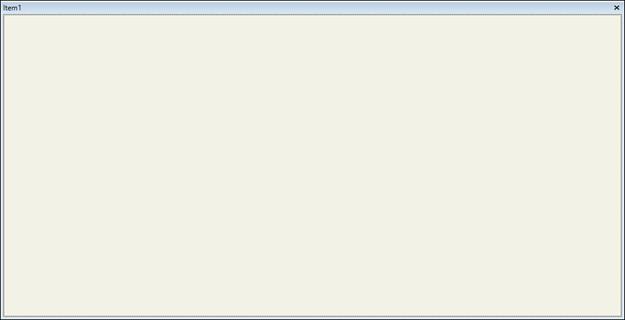
Rolling Up support
The float window is rolled up to top using the property IsRollUpTopProperty. To enable this functionality set its value as True, by default its value is False.
<syncfusion:DockingManager IsRollupFloatWindow="True">
<ContentControl syncfusion:DockingManager.Header="Item1" syncfusion:DockingManager.State="Float"/>
</syncfusion:DockingManager>SyncDockingManager.IsRollupFloatWindow = true;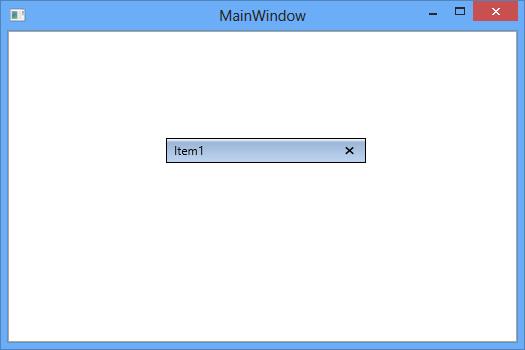
Displaying Float Windows in Taskbar
Taskbar displays the icon of running applications for the purpose of switching between applications. Similarly DockingManager allows to display NativeFloatWindow in taskbar. It can be set using ShowFloatWindowInTaskbar property for all the NativeFloatWindow in DockingManager and default is false. Only NativeFloatWindow icon can be displayed in taskbar so it is necessary to set UseNativeFloatWindow to true.
<syncfusion:DockingManager ShowFloatWindowInTaskbar="True" UseNativeFloatWindow="True">
<ContentControl syncfusion:DockingManager.Header="Toolbox"
syncfusion:DockingManager.State="Float"
Content="No items to display in toolbox"/>
<ContentControl syncfusion:DockingManager.Header="Solution Explorer"
syncfusion:DockingManager.State="Float"
Content="Loading failed"/>
</syncfusion:DockingManager>SyncDockingManager.UseNativeFloatWindow = true;
SyncDockingManager.ShowFloatWindowInTaskbar = true;Show or Hide the Taskbar support for Selective Windows
To enable or disable the taskbar support for particular window, use the attached property ShowInTaskbar of DockingManager and the default is true. It is necessary to set ShowFloatWindowInTaskbar property of DockingManager to true for displaying even a single NativeFloatWindow in taskbar.
<syncfusion:DockingManager ShowFloatWindowInTaskbar="True" UseNativeFloatWindow="True">
<ContentControl syncfusion:DockingManager.Header="Toolbox" syncfusion:DockingManager.State="Float"
syncfusion:DockingManager.ShowInTaskbar="False"
Content="No items to display in toolbox"/>
<ContentControl syncfusion:DockingManager.Header="Solution Explorer"
syncfusion:DockingManager.State="Float"
Content="Loading failed"/>
</syncfusion:DockingManager>SyncDockingManager.UseNativeFloatWindow = true;
SyncDockingManager.ShowFloatWindowInTaskbar = true;
DockingManager.SetShowInTaskbar(Toolbox, false);Multiple Monitor functionalities
The default behavior of the float window remains as Popup in the DockingManager.
On using MultiMonitor scenario, the FloatWindow behavior as follows:
- FloatWindow can be resized both in primary and secondary monitor.
- On showing half of the float window between primary and secondary monitor, the float window remains in half between the monitor while plugged in and plugged out of the secondary monitor.
- When float window is moved to secondary monitor from primary monitor, the float window remains at the secondary monitor itself while plugged in.
To make float window behave like a WPF window in multiple monitor, set the property UseNativeFloatWindow as True.
Enabling or Disabling the float functionality
The CanFloat property helps to enable or disable the floating functionality by setting its value as True or False respectively. By default its value is True, to disable this functionality turn its value to False.
<syncfusion:DockingManager x:Name="DockingManager1" >
<ContentControl syncfusion:DockingManager.Header="Item1" syncfusion:DockingManager.CanFloat="True"/>
<ContentControl syncfusion:DockingManager.Header="Item2" syncfusion:DockingManager.CanFloat="False"/>
</syncfusion:DockingManager>//To Enable the Float Functionality
DockingManager.SetCanFloat(Item1, true);
//To disable the Float Functionality
DockingManager.SetCanFloat(Item2, false);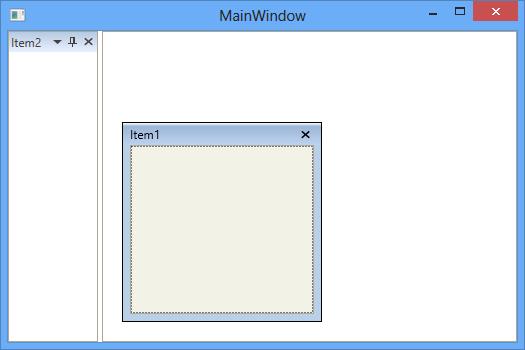
Enabling and Disabling the float functionality Operation on Double Click
The float window changes its state to Dock when double click its header by default. To disable this functionality for the specific child, set NoDock property as True.
<syncfusion:DockingManager x:Name="DockingManager1">
<ContentControl syncfusion:DockingManager.Header="Item1" x:Name="Content1"
syncfusion:DockingManager.State="Float" syncfusion:DockingManager.NoDock="True"/>
</syncfusion:DockingManager>DockingManager.SetNoDock(Content1, true);Maximize/Minimize float window
The float window provides Maximization support for better usability and it is only applicable for NativeFloatWindow. To enable the maximizing feature for the Float window, set CanFloatMaximize for the specific child as True. By default, its value is False.
<syncfusion:DockingManager UseNativeFloatWindow="True">
<ContentControl syncfusion:DockingManager.Header="Item1" x:Name="Content1"
syncfusion:DockingManager.State="Float" syncfusion:DockingManager.CanFloatMaximize="True"/>
</syncfusion:DockingManager>SyncDockingManager.UseNativeFloatWindow = true;
DockingManager.SetCanFloatMaximize(Content1, true);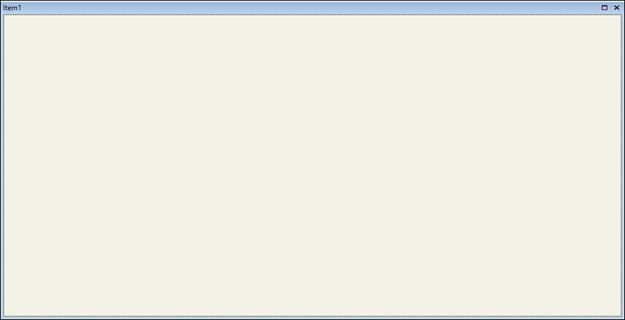
Float or Maximize on double clicking the header
The DoubleClickAction property of DockingManager decides whether the NativeFloatWindow can be maximized or moved to dock state while double clicking on header. If the property DoubleClickAction is DockOrFloat, the NativeFloatWindow will moved to dock state while double clicking on header. Also, if the property DoubleClickAction is MaximizeOrRestore, the NativeFloatWindow will moved to maximized or restored window state while double clicking on header only when its CanFloatMaximize attached property is true. The default value of the DoubleClickAction property is DockOrFloat.
<syncfusion:DockingManager x:Name="dockingManager" UseNativeFloatWindow="True" DoubleClickAction="DockOrFloat">
<ContentControl x:Name="Dock1" syncfusion:DockingManager.Header="Dock1" syncfusion:DockingManager.State="Float"/>
<ContentControl x:Name="Dock2" syncfusion:DockingManager.Header="Dock2"/>
<ContentControl x:Name="Dock3" syncfusion:DockingManager.Header="Dock3"/>
<ContentControl x:Name="Dock4" syncfusion:DockingManager.Header="Dock4"/>
</syncfusion:DockingManager>dockingManager.DoubleClickAction = DoubleClickAction.DockOrFloat;NOTE
The DoubleClickAction property works only when UseNativeFloatWindow property is true in DockingManager.
Positioning on desire location
The FloatWindow can be placed at any desired location. To position the FloatWindow at the desired location with the required Rect Bounds, call SetFloatingWindowRect method of the DockingManager.
DockingManager.SetFloatingWindowRect(Content1,new Rect(200,200,200,200));DockingManager.SetFloatingWindowRect(Content1, New Rect(200, 200, 200, 200))
Snapping Float window
Float window can be snapped with the edge of another float window and moving all together in DockingManager. To enable snapping window feature for the Float window, set AllowSnap for the specific child as True and set EnableSnappingFloatWindow as True in DockingManager. By default, its value is False
<syncfusion:DockingManager EnableSnappingFloatWindow="True">
<ContentControl x:Name="Dock1" syncfusion:DockingManager.Header="Dock1"
syncfusion:DockingManager.AllowSnap="True"/>
<ContentControl x:Name="Dock2" syncfusion:DockingManager.Header="Dock2"
syncfusion:DockingManager.AllowSnap="True"/>
<ContentControl x:Name="Dock3" syncfusion:DockingManager.Header="Dock3"
syncfusion:DockingManager.AllowSnap="True"/>
<ContentControl x:Name="Dock4" syncfusion:DockingManager.Header="Dock4"
syncfusion:DockingManager.AllowSnap="True"/>
</syncfusion:DockingManager>SyncDockingManager.EnableSnappingFloatWindow = true;
DockingManager.SetAllowSnap(Dock1, true);
DockingManager.SetAllowSnap(Dock2, true);
DockingManager.SetAllowSnap(Dock3, true);
DockingManager.SetAllowSnap(Dock4, true);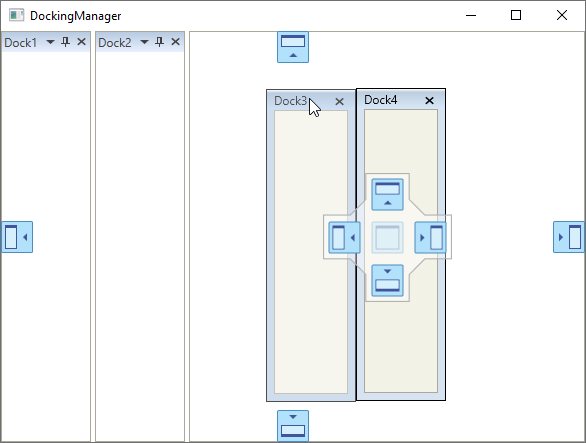
We can get the snapped windows collection for specific float child using GetSnappedWindows method.
DockingManager.GetSnappedWindows(Dock1);Custom context menu items for floating window
You can add the custom context menu items for floating window by using the FloatWindowContextMenuItems property. You can also add sub menu items for custom context menu item by adding that sub CustomMenuItem to the parent CustomMenuItem. You can check or uncheck the CustomMenuItem interactively or programmatically by using the CustomMenuItem.IsChecked property.
You can collapse the default floating context menu and show only the custom floating context menu items by setting the CollapseDefaultContextMenuItemsInFloat property to true. The default value of CollapseDefaultContextMenuItemsInFloat property is false.
<syncfusion:DockingManager
DockFill="True"
Name="dockingManager" >
<!--Adding custom context menu items for float windows-->
<syncfusion:DockingManager.FloatWindowContextMenuItems>
<syncfusion:CustomMenuItemCollection>
<!--Adding custom context menu items-->
<syncfusion:CustomMenuItem Header="Menu 1"/>
<syncfusion:CustomMenuItem Header="Menu 2">
<!--Adding sub custom context menu items-->
<syncfusion:CustomMenuItem Header="SubMenu 1"/>
<syncfusion:CustomMenuItem Header="SubMenu 2"/>
<syncfusion:CustomMenuItem Header="SubMenu 3" IsChecked="True"/>
</syncfusion:CustomMenuItem>
</syncfusion:CustomMenuItemCollection>
</syncfusion:DockingManager.FloatWindowContextMenuItems>
<ContentControl syncfusion:DockingManager.Header="Item 1"
syncfusion:DockingManager.State="Dock"/>
<ContentControl syncfusion:DockingManager.Header="Item 2"
syncfusion:DockingManager.State="Dock"/>
<ContentControl syncfusion:DockingManager.Header="Float Window"
syncfusion:DockingManager.CollapseDefaultContextMenuItemsInFloat="True"
syncfusion:DockingManager.State="Float"/>
</syncfusion:DockingManager>//Creating custom context menu items
CustomMenuItem menu1 = new CustomMenuItem();
menu1.Header = "Menu 1";
CustomMenuItem menu2 = new CustomMenuItem();
menu2.Header = "Menu 2";
//Creating custom sub context menu items
CustomMenuItem customMenuItem1 = new CustomMenuItem() { Header = "SubMenu 1" };
CustomMenuItem customMenuItem2 = new CustomMenuItem() { Header = "SubMenu 2" };
CustomMenuItem customMenuItem3 = new CustomMenuItem() { Header = "SubMenu 3", IsChecked = true };
menu2.Items.Add(customMenuItem1);
menu2.Items.Add(customMenuItem2);
menu2.Items.Add(customMenuItem3);
//Adding custom context menu items with sub menu items
dockingManager.FloatWindowContextMenuItems.Add(menu1);
dockingManager.FloatWindowContextMenuItems.Add(menu2);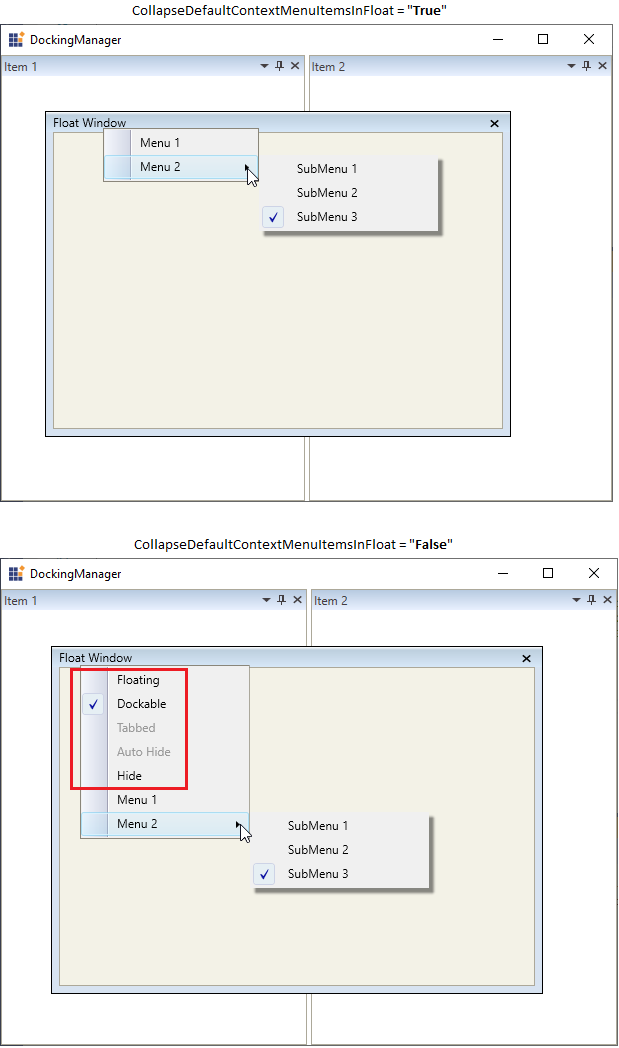
NOTE